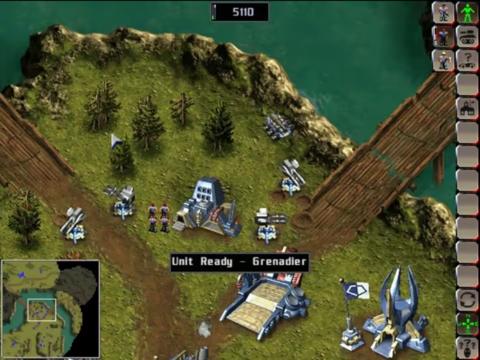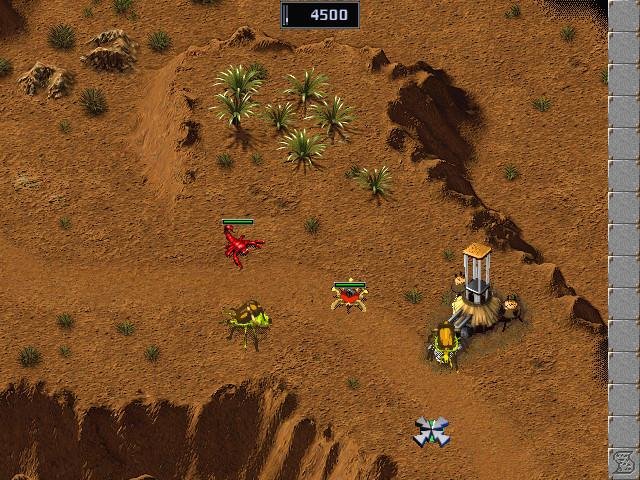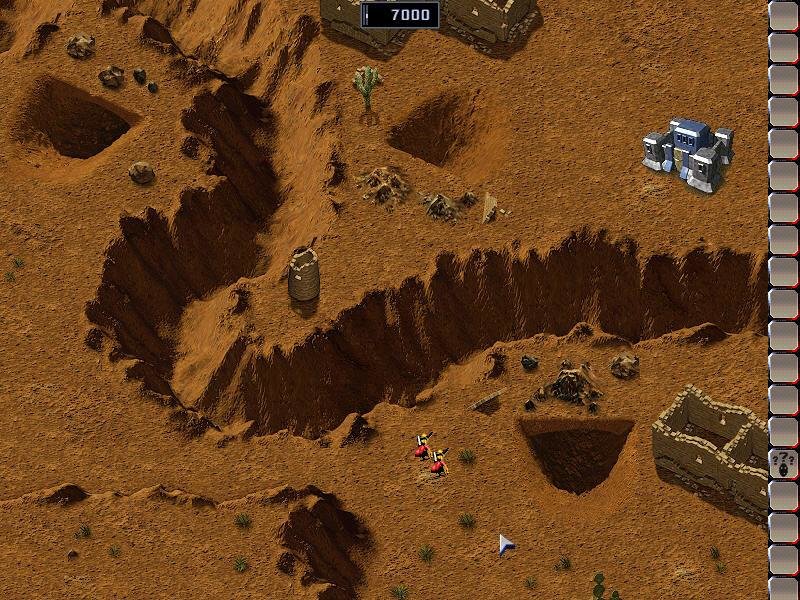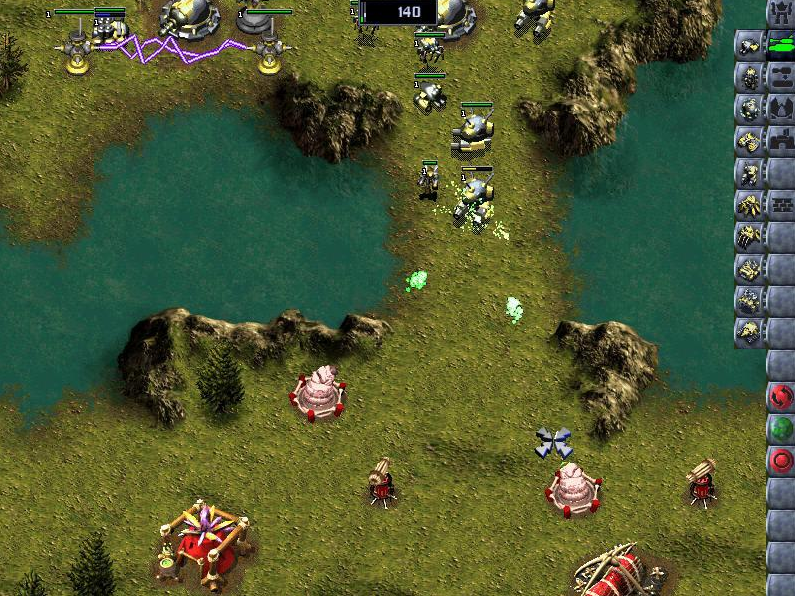

All sides have the equivalent of the big tank, the bigger tank and the truly devastating really big tank. Another problem is the lack of creativity. This severely limits the replay value once you know one side, you know them all. All three armies are effectively identical, functionally speaking-there is an exact counterpart for every unit. Unfortunately, the differences end there.

The unit graphics are excellent, with lots of variations between the sides. Controlling high ground is a huge advantage: units can shoot down over a cliff, but the poor saps below cannot return fire. Also, the terrain is actually effective for example, infantry units can move through trees, but vehicles get stuck. A fair amount of variation exists in the terrain city, jungle, and desert maps are all well done. While this lacks the flair of a 3D game, it’s well-executed, with terrain graphics and explosions that are top of the line as far as isometric RTS gaming. The game uses two dimensional maps and sprites for units. Unfortunately, the addition of a new side has very little effect on gameplay. Nothing ticks off a farming robot more than the destruction of crops, and it’s pay back time.

In addition to the Survivors and Evolved in the original, a new side has been added: Series 9 agricultural robots. Krossfire, set on post-apocalyptic Earth, starts its story forty years after its predecessor. Krossfire is your standard issue RTS experience, buried underneath an avalanche of similar games from that time period. If you didn’t Krush, Kill, ‘n’ Destroy enough in the first game then here’s the sequel.

It was released on PlayStation in 1999 as KKnD: Krossfire. full Game is the sequel to KKnD in the KKnD series, released on Octofor Microsoft Windows.


 0 kommentar(er)
0 kommentar(er)
